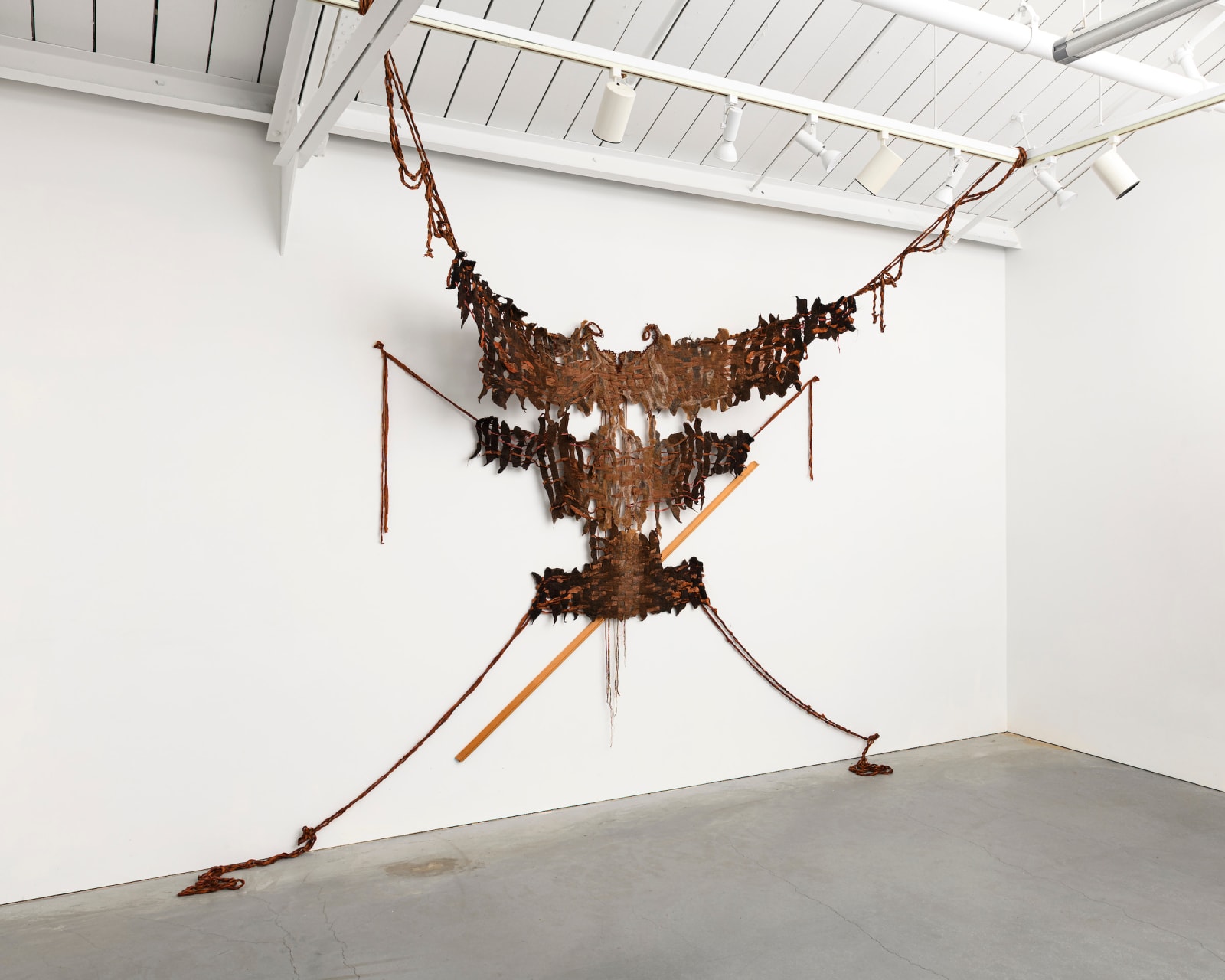Kira Dominguez Hultgren USA, b. 1980
The Eagle Doesn't Fall Far from the Tree, 2022
CA wool, grandma's silk, artist's hair, LA jute, PVC, wood
96 x 105 x 36 in
243.8 x 266.7 x 91.4 cm
Dimensions variable
243.8 x 266.7 x 91.4 cm
Dimensions variable
Copyright The Artist
Further images
A woven and felted eagle in pieces. A contradiction when weaving is a process of bringing together and felting is a process of matting, enmeshing fibers until the fabric is...
A woven and felted eagle in pieces. A contradiction when weaving is a process of bringing together and felting is a process of matting, enmeshing fibers until the fabric is so dense it’s impossible to separate (think of that wool sweater that shrinks in the dryer). But this huelga/eagle – the strike symbol and logo of the United Farm Workers – was made so that the wool and silk would come together and pull apart at the same time.
I made the fabric for this during the first month of quarantine 2020. I needed a process that didn’t make sense, that created as many problems as it solved. I needed a process that was broken.
That’s what I got. I ended up with so many pieces, I couldn’t figure out how to stabilize them without losing the tension of space and brokenness.
Then almost two years later, I fell down the stairs (again!) and was forced to take time to mend (and read).
In Jen Hewett’s This Long Thread, one artist talks about randa crochet, a decorative edging technique from Mexico. What? Randa is an embroidery technique from India used in mending. In researching randa, I realized how many countries claim it as their own.
Here was the technique for broken pieces: mend the vulnerabilities, embellish the gaps, let the tears be visible; take stitches from Mexican huipils and Indian kurtas; trespass with a sprained ankle on making practices via YouTube tutorials while laid up on the couch.
A little far from the original motivations for this piece: a (made up?) story of my dad falling from a tree while picking oranges on migrant farms in the Central Valley; and model and storyteller Luz Jiménez embodying/creating the symbols that 1960s Chicanx artists and the UFW later drew from.
I made the fabric for this during the first month of quarantine 2020. I needed a process that didn’t make sense, that created as many problems as it solved. I needed a process that was broken.
That’s what I got. I ended up with so many pieces, I couldn’t figure out how to stabilize them without losing the tension of space and brokenness.
Then almost two years later, I fell down the stairs (again!) and was forced to take time to mend (and read).
In Jen Hewett’s This Long Thread, one artist talks about randa crochet, a decorative edging technique from Mexico. What? Randa is an embroidery technique from India used in mending. In researching randa, I realized how many countries claim it as their own.
Here was the technique for broken pieces: mend the vulnerabilities, embellish the gaps, let the tears be visible; take stitches from Mexican huipils and Indian kurtas; trespass with a sprained ankle on making practices via YouTube tutorials while laid up on the couch.
A little far from the original motivations for this piece: a (made up?) story of my dad falling from a tree while picking oranges on migrant farms in the Central Valley; and model and storyteller Luz Jiménez embodying/creating the symbols that 1960s Chicanx artists and the UFW later drew from.
Provenance
Luz Jiménez, Heroes Gallery, NYC, March 17 - April 23, 2022To Carry Every Name but Your Own, Eleanor Harwood Gallery, San Francisco CA, September 10 to October 22, 2022














